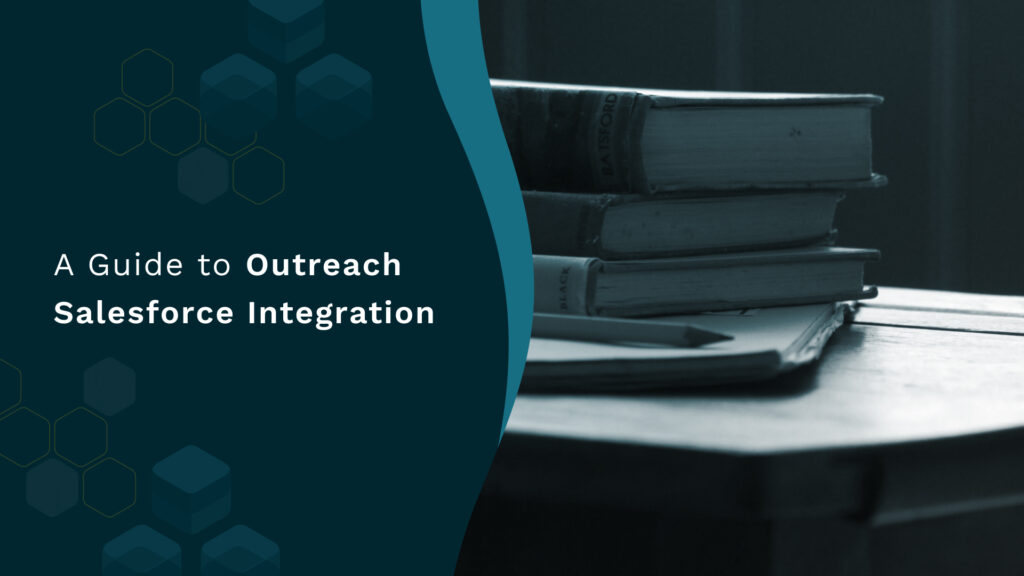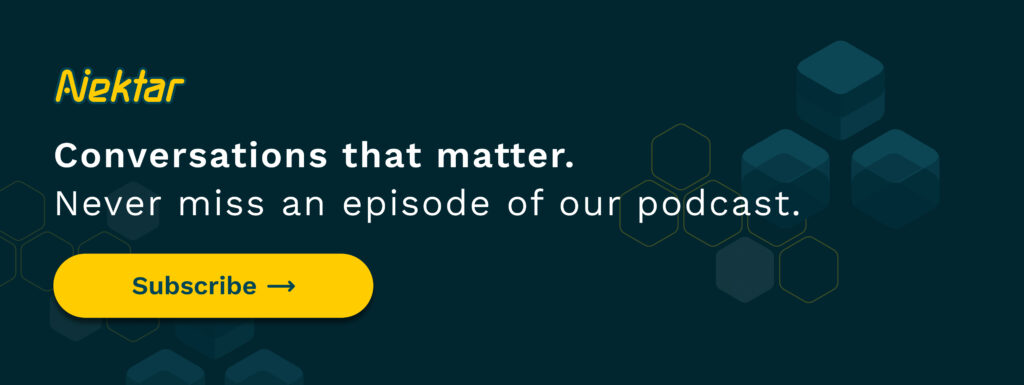For sales and marketing professionals, managing and nurturing leads and prospects is a critical function that can make or break a deal. Salesforce and Outreach, two powerful tools in their own right, have emerged as game-changers in this regard.
Outreach is a unified sales engagement platform that facilitates your sales opportunities and improves productivity. It has a wide range of applications, from intelligent sales automation to buyer sentiment analysis, and it does much more. On the other hand, Salesforce is the number one Customer Relationship Management(CRM) platform that leverages your marketing, sales, IT, and other services.
When you connect Outreach to Salesforce, their benefits get multiplied. This integration creates a synergy that supercharges your sales and marketing efforts, allowing you to take a more holistic approach to customer relationship management.
In this blog, you will be introduced to Salesforce and Outreach, along with their key features. Following this, you will get to know the purpose behind Salesforce Outreach Integration, their connection requirements, and the steps involved in establishing these connections.
What is Salesforce Integration?
Salesforce integration refers to connecting Salesforce with other software applications or systems to enable seamless data sharing and communication between them. Integration is essential for businesses because it allows them to streamline their operations, improve efficiency, and provide a unified view of customer data across different departments and systems.
Integrating Salesforce with Outreach is a strategic move for many sales and marketing teams seeking to supercharge their outreach efforts. When integrated with Salesforce, Outreach gains access to Salesforce’s rich customer data, enabling sales teams to personalize outreach efforts with up-to-date information. This integration allows for seamless lead and contact synchronization, real-time activity tracking, and automated task creation, significantly improving efficiency in managing sales workflows.
The integration between Outreach and Salesforce generates and modifies records in both systems, subsequently harmonizing the two platforms to maintain identical information. Depending on their workflow, users can employ Outreach or Salesforce as their primary front-end application. This integration allows users to engage in both inbound and outbound activities, facilitating strategic communication with Leads, Contacts, and Accounts.
Moreover, it empowers organizations to maintain a cohesive view of their sales pipeline, ensuring that sales and marketing teams are aligned and can effectively nurture leads and drive conversions.
Purpose of Outreach Salesforce Integration
By utilizing Outreach, you can monitor your entire sales pipeline, extract more insightful data, and achieve a more comprehensive understanding of revenue attribution across all your activities. Salesforce stands out as a top-tier CRM platform renowned for its exceptional features and capabilities. When you establish a connection between Outreach and Salesforce, the advantages of both platforms are mutually shared, enhancing work quality.
The integration of Salesforce and Outreach enables seamless record creation and updates on both platforms. Depending on your workflow preferences post-integration, you can use Outreach or Salesforce as your primary front-end application. This flexibility allows you to significantly improve your Inbound and Outbound strategies through well-planned communication with your Accounts, Contacts, and Leads.
Integrating Outreach with Salesforce offers several benefits for sales and marketing teams, including:
1. Streamlined workflow
The integration eliminates manual data entry by syncing prospect and customer information between Outreach and Salesforce. This streamlines workflow, reduces data duplication, and saves time for your sales and marketing teams.
2. Improved data accuracy
By keeping data consistent across both platforms, the integration enhances data accuracy and minimizes errors, leading to more reliable insights and decision-making.
3. Enhanced lead management
Sales teams can efficiently manage leads, contacts, and opportunities within Salesforce and engage with them through Outreach, ensuring that no potential lead falls through the cracks.
4. Personalized outreach
Sales reps can personalize outreach efforts using up-to-date information from Salesforce, such as lead status, interactions, and historical data, leading to more effective communication and higher conversion rates.
5. Automated tasks
Outreach can automatically create tasks and reminders based on Salesforce data, ensuring that follow-ups and important actions are never missed.
6. Advanced reporting
Integrating the two platforms allows for comprehensive reporting and analytics, providing insights into outreach performance, lead conversions, and campaign effectiveness.
7. Sales productivity
Reps can work within their preferred platform (Outreach or Salesforce) while benefiting from seamless data exchange, reducing context-switching and increasing productivity.
8. Account-based marketing (ABM)
With synchronized data, marketing teams can run more targeted ABM campaigns, aligning their efforts with sales strategies to engage high-value accounts effectively.
9. Sales cadences
Outreach offers customizable sales cadences for email sequences, calls, and follow-ups, allowing reps to automate and optimize their outreach strategies within Salesforce.
10. Scalability
As your business grows, the integration scales with you, accommodating larger prospect and customer databases and supporting your evolving sales and marketing needs.
Integrating Salesforce with Outreach enhances efficiency by automating many manual tasks, such as data entry and lead nurturing. This not only saves valuable time but also reduces the risk of errors.
It also provides a 360-degree view of prospect and customer interactions by syncing data between the two platforms, enabling teams to make more informed decisions and deliver personalized outreach.
Steps in Outreach Salesforce Integration
Now that we have looked at the benefits of Outreach Salesforce integration let’s go through the steps and requirements for the merger:
1. Outreach requirements
To establish a connection between Outreach and Salesforce, several prerequisites need to be met:
- As an Outreach User, you must hold the Admin role within the Outreach Platform to access the plugin settings for establishing connections.
- To facilitate communication and synchronization with Salesforce, REST API calls are essential. It’s important to note that REST API calls are accessible exclusively in the Enterprise and Unlimited editions, and they are not available in the Professional Edition.
- In the case of the Salesforce Professional Edition, it’s necessary to procure API Call Bundles and acquire Web API Packages to meet the requirements for integration.
2. Salesforce requirements
To establish a connection between Salesforce and Outreach, these conditions must be met:
- As a Salesforce User, you should possess knowledge of the procedures for creating, modifying, and removing data on the specific objects that you intend to display in Outreach.
- It is essential to be familiar with the Field-Level Security settings, as they determine your ability to view and alter mapped fields.
- Under the System Permissions option, the “API Enabled” setting in your user Profile must be activated.
- Your user profile should be granted permissions to both create and edit all objects.
Steps to Integrate Outreach With Salesforce
Once the above-mentioned requirements are met, users need to follow the steps given below in order to integrate Outreach with Salesforce:
1. To establish a connection between your Outreach account and Salesforce, begin by accessing Outreach and locating the User Avatar button situated in the lower-left corner. From there, proceed to access the Settings. Please bear in mind that in order to perform this action, the user must hold administrative privileges within the Outreach platform. In the System Config menu, click “Plugins,” followed by “Add.” You should see options listed for Salesforce, Salesforce Sandbox, or Microsoft Dynamics. Select one and follow the prompts to integrate.
2. With the plugin authenticated and linked successfully, it’s time to proceed with data mapping.
3. Initially, access the recently created connection. Our goal is to synchronize your Outreach settings with the data flow you previously designed. You will encounter four main choices: Inbound Create, Inbound Update, Outbound Create, and Outbound Update. To prevent any misunderstandings, it’s important to clarify that “Inbound” indicates data moving into Outreach, while “Outbound” signifies data flowing from Outreach to update your CRM.
4. You have now reached the central page of the Plugin, specifically for Types. Each Type corresponds to a specific object, and you’ll notice familiar ones like Prospect, Account, and Opportunity.
As we aim to ensure that your data is entered into Salesforce and then transferred to Outreach, it’s necessary to uncheck all options related to actions like “outbound create.” As part of the integration process, you’ll also want Outreach to be able to modify records in Salesforce, so we’ll retain actions like “Update Outbound.”
To carry out these adjustments, simply access each Type individually, and you’ll have the option to enable or disable the corresponding settings.
After successfully integrating your Salesforce instance, you can enhance your integration further by utilizing Advanced Task Mapping. To enable this feature, you’ll need to submit a support ticket.
Our experience has shown that Outreach support is highly responsive and typically processes these requests promptly. With Advanced Task Mapping, you gain the capability to transmit more detailed information about calls, emails, or general tasks into Salesforce. This includes data such as call duration, direction, disposition, and purpose. Without these three task objects, all entries will be categorized as generic “activities,” resulting in less precise data tracking.
Does Salesforce Integrate with Outreach?
Certainly. You can configure Outreach for integration with Salesforce, but it’s imperative to ensure that you possess the appropriate Salesforce license and permissions. Outreach offers synchronization compatibility with the following Salesforce versions: Salesforce Lightning, Salesforce Aloha (Classic), and Salesforce Console.
To implement this integration effectively, Outreach users should hold admin privileges. Within Salesforce, a system user needs to authorize Outreach and meet specific criteria, which include:
- The capability to create, edit, and delete data on the essential objects that must be displayed in Outreach, such as Accounts, Contacts, Leads, Opportunities, and User Roles.
- Field-Level Security settings that grant permission to view and modify any mapped fields.
- Activation of the “API Enabled” option under System Permissions.
- Authorization to create or edit all objects.
Further details regarding these prerequisites can be found in Outreach’s CRM Connection overview documentation. Notably, data synchronization operates bidirectionally, allowing you also to import Salesforce lists into Outreach.
Simply opt for the “Add Prospects from Salesforce” feature during your integration setup in Outreach. Subsequently, any new prospect introduced to your Salesforce account will be seamlessly and automatically incorporated into Outreach.
Furthermore, you can oversee the synchronization process manually within either Salesforce or Outreach. Whenever you update a prospect’s information in one system, those modifications will be automatically reflected in the other, ensuring the consistency and currency of your data across both platforms.
About Nektar
Nektar is an AI-driven solution designed for RevOps that streamlines customer data management and contacts, consolidating them to unveil valuable insights that typically remain hidden within CRM systems. By harnessing the power of AI to automate CRM tasks, Nektar brings about a transformative shift in the Salesforce user experience, delivering unparalleled returns on investment (ROI).
One common issue is that sales teams often neglect to update their CRM, resulting in subpar data quality and, consequently, a lack of the crucial insights revenue leaders need. This situation amounts to wasteful spending. This is precisely where Nektar steps in to address these challenges. Salesforce data quality tools empower you to derive optimal ROI from your CRM while simultaneously relieving your sales representatives from the burden of manual data entry.
Nektar seamlessly integrates with Salesforce, ensuring the continuous upkeep and accuracy of your data within the CRM. Nektar’s automated processes effectively maintain the cleanliness and integrity of your CRM data, resulting in a robust sales pipeline and the ability to extract valuable insights from pristine data for informed business decision-making.
Talk to our experts today to know more about the exact areas of data deficiencies in your Salesforce or Outreach!


